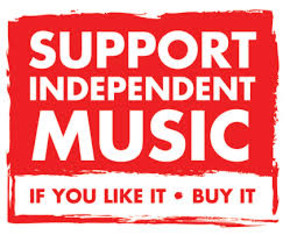To understand where Indie music is going, you have to know where it’s been. In the 1980s, following years of soft rock and irritating disco music, Indie rock exploded onto the music scene. It was different than anything else, but what defined the music was not what it was. What defined the music was what it wasn’t. It wasn’t cookie-cutter rhythms and chord loops. It also wasn’t the mind-numbing brushed rhythms of Discopop. It was truly individual music featuring a variety of styles; the main commonality was a dominant electric guitar and dissonance. Most of the Indie albums were low-budget offerings that somehow managed to break through to the radio stations to get played.
Many of the new artists came from the UK or from Australia. The American beachhead of Indie Rock was forged by bands like REM, The Replacements and The Dream Syndicate. The last band, notable for its founder Steve Wynn, debuted with “The Days of Wine and Roses,” which is sometimes named as one of the most influential rock albums ever. The musicians had a different attitude, released their songs in Independent labels and even dressed differently. In a way, they were like the bands of the 1960s that dressed in bell bottom pants and sported long hair as a sort of badge that they were unique. Then, in the 1990s Indie Rock somehow got married to Grunge and Punk rock. While the sounds were similar, Indie tried to hold onto its independent spirit; that was hard because Punk went mainstream.
Indie is still around, though it has somehow become “cool” instead of alternative. The bastions of Indie are still around too. Wynn, like Mick Jagger, has proved especially long-lived and is not only touring his songs but is still doing new music. Today’s Indie is different, though. The new frontiers of music have dwindled and Independent Rock is changing course. Where is it going? Indie Rock is headed “Back to the Future.” Some of the new bands cite The Beach Boys and even Nat King Cole as major influences in their music, turning out albums that sound a lot like classic vinyl offerings. Many of the groups are going back to the small independent labels as well. They’re using social media as sources of free advertising and turning to digitalized music as a way to get their sounds “out there.” Clubs and venues that are “Indie-friendly” are sprouting up all over and creating a new fan base.
The mainstay of Indie music, though, is the same as it has always been: the desire to make music that isn’t just like everyone else’s. Indie is about a spirit. While some new artists claiming to be Indie have records out on mainstream labels and promotions coming from agents, there is still a spark of rebellion. That rebellion is what speaks to new fans of the music. Though Jagger is far from Indie, it’s the attitude seen in his pout as he screams out his classics even in his seventies, and it’s the attitude that keeps Indie fans turning out to concerts by Wynn.
The saying “Everything old is new again,” has never been truer.

